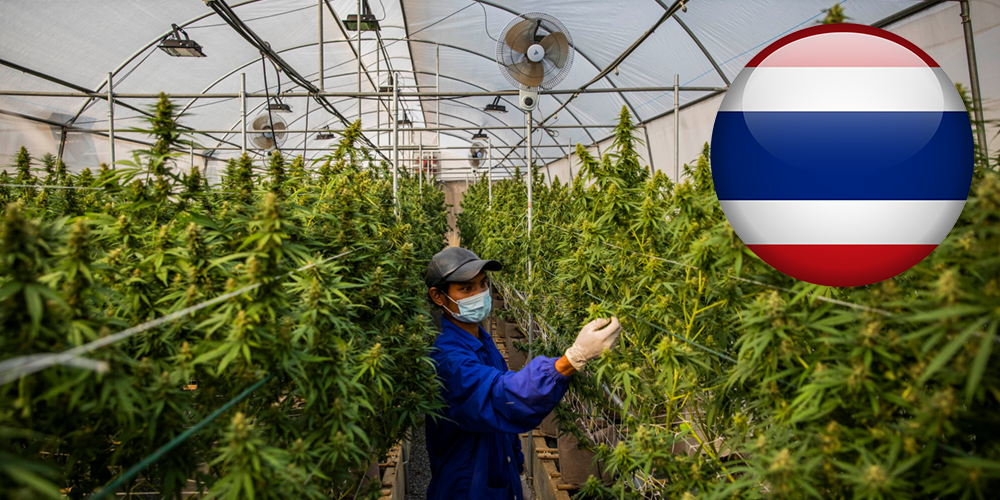Planting cannabis in Thailand requires knowledge of the local climate and soil conditions. Planting and maintenance techniques are the key to successful planting. In addition, strict adherence to breeding and seed production restrictions is also necessary.
Thailand's tropical climate and well drained, slightly acidic soil provide ideal conditions for cannabis cultivation. Warm temperatures, high humidity, and ample sunlight are beneficial for the robust growth of cannabis plants.
In addition, the fertile soil in northern Thailand and other regions provides a suitable environment for growing high-quality cannabis. Choosing suitable varieties and adjusting planting techniques according to local conditions are key factors in achieving a bountiful harvest.
Considering the climate and soil conditions, the key to cultivating cannabis in Thailand lies in mastering effective cultivation and maintenance techniques. Reasonable irrigation methods, nutrient rich soil, and pest control measures are crucial to ensure the successful growth of cannabis.
Regular monitoring of plant health is crucial for timely detection and resolution of any issues. In addition, providing sufficient growth space for each plant and using appropriate support structures are also key steps for successful cultivation.
Regular pruning, reasonable fertilization, and timely harvesting are key factors in maintaining plant health. It is also important to closely monitor plants for signs of pests and diseases, and ensure compliance with local regulations on pesticide use.
Thailand has strict restrictions on breeding and seed production in the cannabis industry. Only licensed breeders are allowed to grow, develop, or sell cannabis seeds for commercial purposes.
In addition, the government has established strict regulations to prevent unauthorized genetic modification and variety hybridization. These measures aim to maintain the quality, consistency, and purity of cannabis varieties in the market, while preventing illegal proliferation.
These restrictions ensure that only approved and certified cannabis varieties can be produced and sold within Thailand's legal framework. In addition, they play a crucial role in maintaining public health by controlling the supply of genetically modified or untested cannabis varieties in the market.

Since 1979, cannabis has been classified as a Class V drug under Thailand's Narcotics Law, which prohibits the use, possession, and sale of cannabis and imposes corresponding penalties on offenders. Forty years later, with the rise of political and economic movements supporting the legalization of marijuana, Thailand legalized medical marijuana in 2019. In the same year, marijuana became the most commonly reported illegal drug in Thailand, with 3% of the population reporting having used marijuana. Afterwards, Thai citizens aged 20 and above can register for medical marijuana treatment without assuming criminal risks. However, it was not until June 2022 when the Thai Food and Drug Administration officially removed all parts of the cannabis plant from the list of Class 5 narcotics that cannabis was listed as a Class 5 narcotic. This makes Thailand the first country in Asia to allow the sale, cultivation, possession, and recreational use of marijuana without legal liability.
After the legalization of marijuana, the lack of product regulation has become a nationwide public health issue, particularly concerning its potential impact on young people. Previous studies in the United States have found that legalizing marijuana may make it easier for teenagers to access it, expose them to related advertisements, and normalize marijuana use. Although research on American teenagers has not found an increase in marijuana use after state legislation, the impact of Thailand's marijuana legislation on teenagers remains to be studied.
There is currently no consensus on whether legalizing marijuana will increase the likelihood of teenagers using other "more potent" drugs after consuming marijuana. However, there is evidence to suggest that the legalization of marijuana has led to an increasing effectiveness of marijuana products. The new problems caused by high-intensity marijuana products include a significant increase in the frequency of marijuana use among teenagers, an increased likelihood of marijuana dependence, and an increased risk of developing mental illness. Monitoring the constantly changing efficacy of cannabis and its impact on the health of adolescent users is crucial for developing cannabis related policies in Thailand.
Despite concerns about the potential negative impact on the health of Thai teenagers, legalizing marijuana may have indirect benefits for social equity and long-term public health. Teenagers who legally obtain marijuana can avoid exposure to criminal environments and the risk of being arrested and imprisoned, thereby avoiding adverse effects on health-related social factors and mental health.
Unfortunately, the new legislation lacks a public health perspective, which could have minimized the associated socio-economic and health risks to the greatest extent possible. The legalization framework should clearly state that protecting public health is the primary goal, while also committed to preventing minors from obtaining marijuana and recognizing the risks of driving, dependence, product contamination, and mixed use with other substances after using marijuana. The experience of alcohol and tobacco control policies can serve as a model for guiding public health oriented regulation. This may include raising prices through taxation, restricting marketing targeting teenagers, limiting consumption in public places, clarifying the issuance and regulatory guidelines for sales licenses and holders, as well as monitoring and preventing driving after marijuana use. In addition, a nationwide cannabis related prevention plan should be implemented, with a focus on raising public awareness of the risks of cannabis and delaying the time when teenagers start using cannabis.
In summary, it is necessary to closely monitor and evaluate the impact of Thailand's marijuana legalization on public health to determine the extent to which new policies may lead to an increase in marijuana use, an increase in marijuana related health risks, and how these changes may affect the use of other substances. The lessons learned from the legalization of marijuana in Western countries emphasize the need for research, evidence-based guidelines, prevention strategies, and intervention measures targeting high-risk populations, including young people.
Prev:none